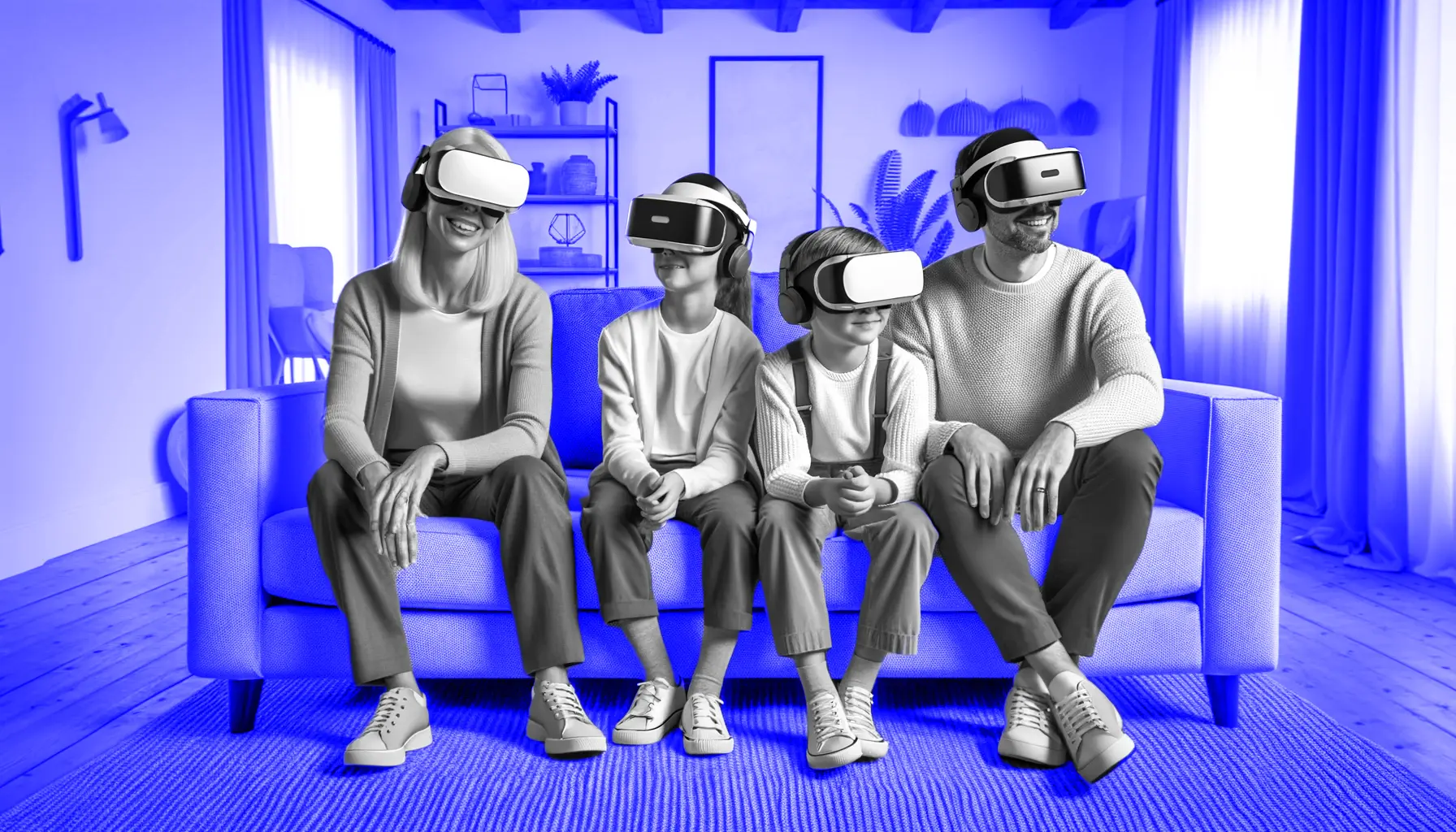
Is this new “innovation” catapulting us into unparalleled realms of connection, or anchoring us deeper in our digital isolation?
by Brendan Shelper
Credits ©
Artwork – Sofia Silva
The Apple Vision Pro, a pinnacle of virtual reality innovation, promises to immerse its users in experiences far beyond the capabilities of traditional media. It offers a gateway to being part of the story rather than merely observing it from the sidelines.
However, the immersive world comes at a significant cost, both financially and socially. With its high price tag, the Vision Pro might not be a feasible option for every household. Despite the lack of specific sales data in this initial offering (200,000 units in the first days of sales?), the industry is buzzing with speculation on its market penetration and impact.
The hype around the launch has me questioning. I am a devoted tech enthusiast but had to probe if such a device will change the way we experience togetherness, or simply isolate us further in our digital cocoons? For me, trying to imagine a scenario where each member of a family dons a $3,500 headset to watch a film or photo album in their living room is a bit of a stretch. Maybe an inaccurate scenario to be working with but this image forces us to confront the potential realities of our digital future outside the office, and what potential such VR devices (sorry, spatial computing devices) can offer us.
Financial and practical considerations aside, Vision Pro challenges our traditional notions of shared experiences. While it markets itself as a transparent window to the world, it serves as a barrier, isolating users in their own virtual spaces. This isolation raises questions about the device’s role in fostering genuine human connections.
Practical application
As we delve into the possibilities that devices like Apple Vision Pro offer, we must also consider the broader implications of their use. How will these technologies affect our ability to connect on a human level? Is there a risk that the virtual experiences they provide could replace the warmth and spontaneity of real-world interactions?
At Battle Royal Studios, we’ve explored the utility of VR technology in creating immersive mock-ups and hosting public events. These experiences have proven VR’s value in bringing visionary projects to life and engaging audiences in new ways. Yet, they’ve also highlighted the technology’s inherent isolating nature, reminding us of the importance of maintaining a balance between digital innovation and human connection.
Particularly, talking about our youth, escapism, people diving into virtual realities to become someone they’re not, an avatar which ignores their physical self and disconnects them from their real selves is worrying. My last experience with family over the holidays was dominated with getting the kids off screens and out into the fresh air and physical activities, I can only imagine what it is like to deal with this every day as a parent. Let’s not kid ourselves, the addiction to such enhanced environments is enormous.
The Apple Vision Pro Experience
Despite its marketed transparency, the Vision Pro is undeniably a VR headset, designed to encase the user in a virtual environment. The external screen and glossy advert images may suggest a window to the outside world, but it’s very much a closed goggle system.
Here’s a full product breakdown video of Apple VP, very comprehensive and after a single day has close to 10m views at time of posting.
Coming back after Covid has shown us just how important and sacred shared moments are for the general well-being of society.
The goal should not be to replace the shared laughter, whispered comments, or telling your partner to get off their phone and watch the movie but to find ways to amplify these moments, ensuring that our journey into the virtual realm brings us closer, not further apart. We must carefully balance the allure of digital immersion with the timeless value of human connection.
A hilarious link to AVP use in the States.
Having just returned from Las Vegas, I can say there were no such user cases in public that I ran into.